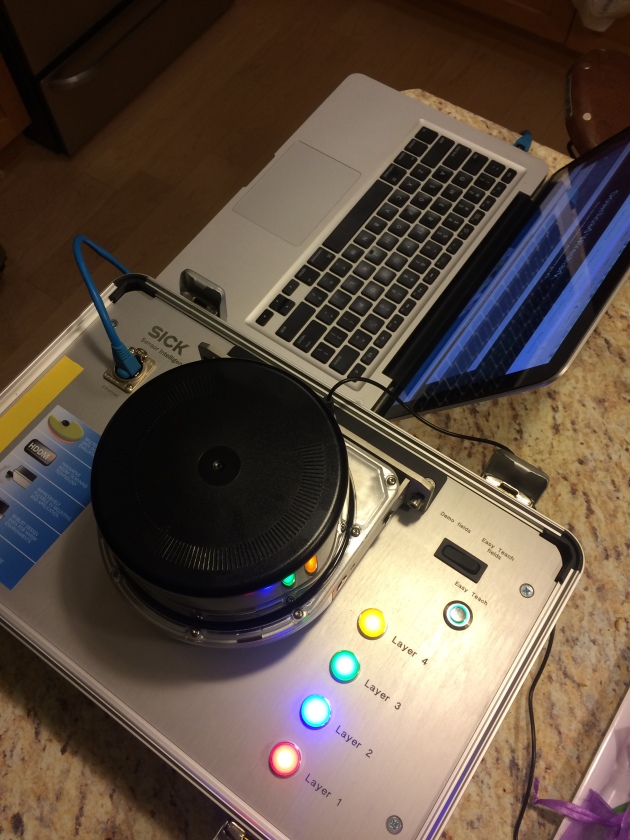Click to access 1611.08408.pdf
References
[1] A. Arnab, S. Jayasumana, S. Zheng, and P. Torr. Higher order conditional random fields in deep neural networks. In ECCV, 2016.
[2] L.-C. Chen, G. Papandreou, I. Kokkinos, K. Murphy, and A. Yuille. Semantic image segmentation with deep convolutional nets and fully connected CRFs. In ICLR, 2015.
[3] G. Csurka, D. Larlus, and F. Perronnin. What is a good evaluation measure for semantic segmentation? In BMVC, 2013.
[4] E. Denton, S. Chintala, A. Szlam, and R. Fergus. Deep generative image models using a Laplacian pyramid of adversarial networks. In NIPS, 2015.
[5] A. Dosovitskiy, J. Springenberg, and T. Brox. Learning to generate chairs with convolutional neural networks. In CVPR, 2015.
[6] M. Everingham, S. Ali Eslami, L. van Gool, C. Williams, J. Winn, and A. Zisserman. The PASCALvisual object classes challenge: A retrospective. IJCV, 111(1):98–136, 2015.
[7] C. Farabet, C. Couprie, L. Najman, and Y. LeCun. Learning hierarchical features for scene labeling. PAMI, 35(8):1915–1929, 2013.
[8] J. Gauthier. Conditional generative adversarial nets for convolutional face generation. Unpublished, .
[9] I. Goodfellow, J. Pouget-Abadie, M. Mirza, B. Xu, D. Warde-Farley, S. Ozair, A. Courville, and Y. Bengio. Generative adversarial nets. In NIPS, 2014.
[10] S. Gould, R. Fulton, and D. Koller. Decomposing a scene into geometric and semantically consistent regions. In ICCV, 2009.
[11] D. Grangier, L. Bottou, and R. Collobert. Deep convolutional networks for scene parsing. In ICML Deep Learning Workshop, 2009.
[12] B. Hariharan, P. Arbelaez, L. Bourdev, S. Maji, and J. Malik. Semantic contours from inverse detectors. In ICCV, 2011.
[13] P. Kohli, L. Ladický, and P. Torr. Robust higher order potentials for enforcing label consistency. IJCV, 82(3):302–324, 2009.
[14] P. Krähenbühl and V. Koltun. Parameter learning and convergent inference for dense random fields. In ICML, 2013.
[15] G. Lin, C. Shen, A. van den Hengel, and I. Reid. Efficient piecewise training of deep structured models for semantic segmentation. In CVPR, 2016.
[16] J. Long, E. Shelhamer, and T. Darrell. Fully convolutional networks for semantic segmentation. In CVPR, 2015.
[17] D. Martin, C. Fowlkes, and J. Malik. Learning to detect natural image boundaries using local brightness, color, and texture cues. PAMI, 26(5):530–549, 2004.
[18] M. Mathieu, C. Couprie, and Y. LeCun. Deep multi-scale video prediction beyond mean square error. In ICLR, 2016.
[19] M. Mirza and S. Osindero. Conditional generative adversarial nets. In NIPS deep learning workshop, 2014.
[20] A. Nguyen, J. Yosinski, and J. Clune. Deep neural networks are easily fooled: High confidence predictions for unrecognizable images. In CVPR, 2015.
[21] H. Noh, S. Hong, and B. Han. Learning deconvolution network for semantic segmentation. In ICCV, 2015.
[22] D. Pathak, P. Krähenbühl, J. Donahue, T. Darrell, and A. Efros. Context encoders: Feature learning by inpainting. In CVPR, 2016.
[23] P. Pinheiro and R. Collobert. Recurrent convolutional neural networks for scene labeling. In ICML, 2014.
[24] P. Pinheiro, T.-Y. Lin, R. Collobert, and P. Dollár. Learning to refine object segments. In ECCV, 2016.
[25] A. Radford, L. Metz, and S. Chintala. Unsupervised representation learning with deep convolutional generative adversarial networks. In ICLR, 2016.
[26] S. Reed, Z. Akata, X. Yan, L. Logeswaran, B. Schiele, and H. Lee. Generative adversarial text to image synthesis. In ICML, 2016.
[27] O. Ronneberger, P. Fischer, and T. Brox. U-net: Convolutional networks for biomedical image segmentation. In Medical Image Computing and Computer-Assisted Intervention, 2015.
[28] S. Roweis, L. Saul, and G. Hinton. Global coordination of local linear models. In NIPS, 2002.
[29] S. Saxena and J. Verbeek. Convolutional neural fabrics. In NIPS, 2016.
[30] A. Schwing and R. Urtasun. Fully connected deep structured networks. Arxiv preprint, 2015.
[31] K. Simonyan and A. Zisserman. Very deep convolutional networks for large-scale image recognition. In ICLR, 2015.
[32] C. Szegedy, W. Zaremba, I. Sutskever, J. Bruna, D. Erhan, I. Goodfellow, and R. Fergus. Intriguing properties of neural networks. In ICLR, 2014.
[33] D. Tarlow and R. Zemel. Structured output learning with high order loss functions. In AISTATS, 2012.
[34] F. Yu and V. Koltun. Multi-scale context aggregation by dilated convolutions. In ICLR, 2016.
[35] S. Zheng, S. Jayasumana, B. Romera-Paredes, V. Vineet, Z. Su, D. Du, C. Huang, and P. Torr. Conditional random fields as recurrent neural networks. In ICCV, 2015.
[36] Y. Zhou, X. Hu, and B. Zhang. Interlinked convolutional neural networks for face parsing. In International Symposium on Neural Networks, 2015.






















